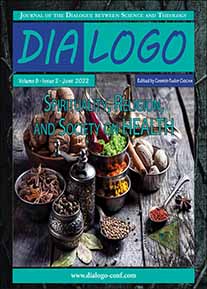Interfaith dialogue in limbo: How can tradition work against religious purposes?
Interfaith dialogue in limbo: How can tradition work against religious purposes?
Author(s): Cosmin Tudor CiocanSubject(s): Theology and Religion, Comparative Studies of Religion, Philosophy of Religion, Sociology of Religion
Published by: Dialogo Publishing House SRL
Keywords: Culture; Tradition; Discrimination; Exclusivism; Division; Significance; Imposition; Custom; Pluralism;
Summary/Abstract: When we talk about dialogue, we always start looking for ways to best present the content of our speech. Approaching another through dialogue does not seem to care too much about the will or desire to accept the otherness for dialogue even if this is the basis of the binary formula of dialogue. Yet, in the case of religious dialogue, things are not at all so clear or proactive; instead, this (accepting otherness) is usually the central issue of interreligious dialogue. However, when we finally manage to bring together two or more religious representatives for dialogue, the most intriguing aspect of the dialogue is less emphasized on the content and issues to be brought to the attention of the participants and more on the issue of accepting, tolerating all others’ traditions through this dialogue. Nervousness, anxiety, discomfort, and squirming are the habitual and, even more shocking, "expected" features in interfaith dialogue. Well, if this is the main problem in interfaith - being able to bring acceptance in this "toxic" environment - then this would be a step forward. But probably all these are since, at present, the construction of interreligious dialogue is still in progress, about to be polished and become a formal custom, an emerging tradition of the current era. However, is the content that all participants in the interfaith dialogue bring, our particular traditions, to blame for this challenge? Can they help us build the bridge or, on the contrary, put interfaith in a limbo state, waiting for a redeemer?To pinpoint the direction in which interreligious dialogue is heading, we must better evaluate and understand a "tradition", what it is, how it works, and why it is developed and preserved. What is the significance of a tradition for people in general and a religious group in particular? How deeply rooted is it in human thinking and how valuable to fight for it? And then, can we consider changing, altering, or even removing a whole tradition from our perspective? If so, [regardless of the response] what is then the impact of [any] tradition on us and our reactions to the current issues, therefore to human endeavor? This article illustrates the role that tradition plays in peoples' views of the world and how tradition influences their behavior and attitudes toward certain practices and against a current acquisition of interreligious relationships, namely interreligious dialogue.
Journal: Dialogo
- Issue Year: 8/2022
- Issue No: 2
- Page Range: 208-223
- Page Count: 16
- Language: English

